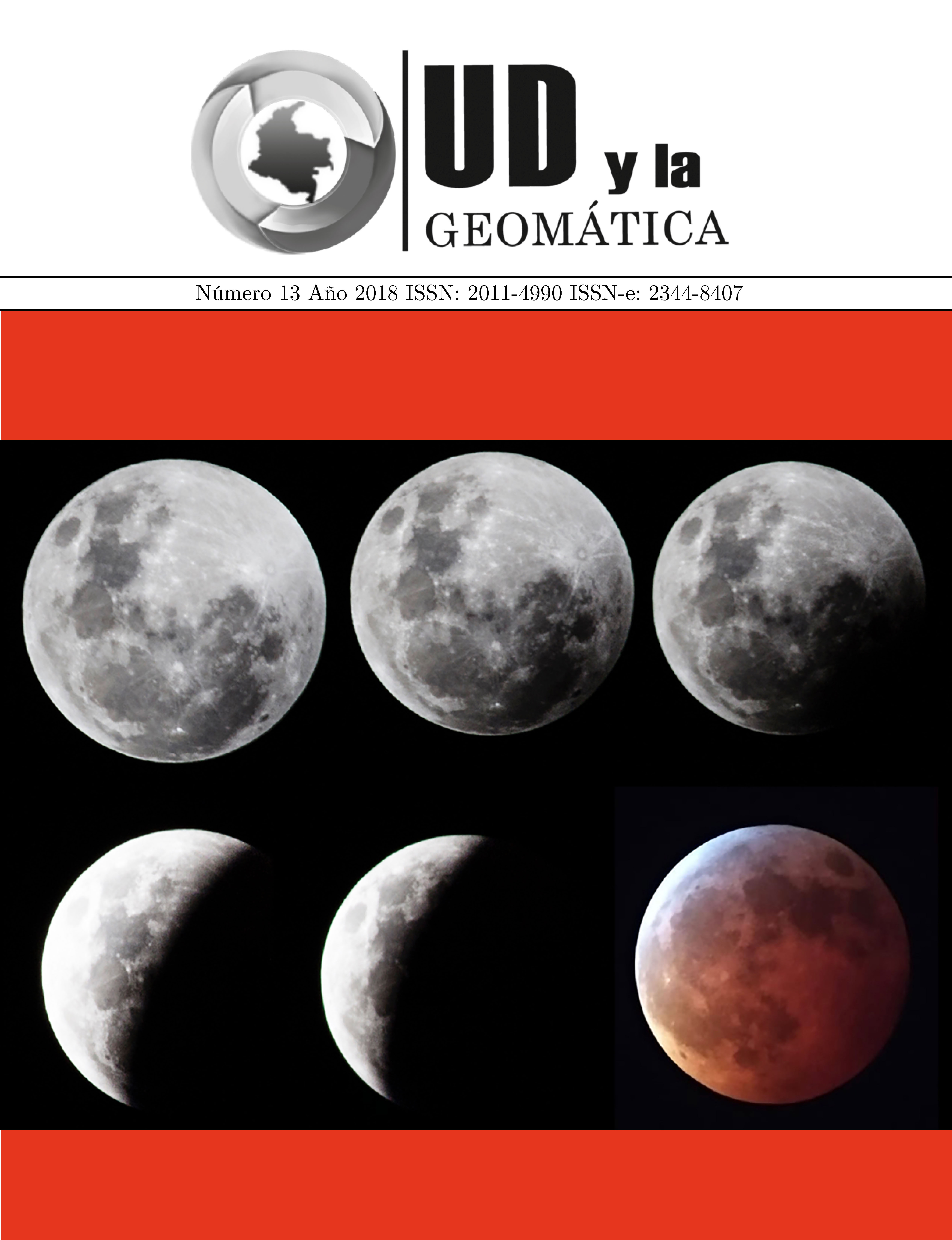DOI:
https://doi.org/10.14483/23448407.13550Publicado:
2019-08-15Número:
Núm. 13 (2018)Sección:
Artículo de investigación científica y tecnológicaLínea de costa teórica de la República Mexicana bajo el supuesto del descongelamiento total de los casquetes polares
Palabras clave:
Ascenso del nivel del mar, Cambio Climático, México, Antártida (es).Descargas
Resumen (es)
La importancia de este trabajo radica en que a través de la simulación de un gran incremento del nivel del mar, se busca incrementar la concientización de la población sobre la importancia de mitigar la huella ecológica, además de adaptarse al respectivo nicho ecológico bajo esta coyuntura de cambio climático. Por lo que este artículo científico, tiene como objetivo: delimitar la línea de costa de la República Mexicana en caso de que la Antártida quedará libre de hielo. Es de advertir que el tratamiento metodológico partió de un análisis espacial donde se revisaron algunos softwares especializados en el manejo de información geofísica y altimétrica de alta resolución. Dentro de los resultados más apremiantes tenemos que hasta la fecha sigue siendo incierto el futuro de los procesos criogénicos y glaciológicos del continente antártico, por tales incertidumbres hemos calculado el nivel máximo posible que podría alcanzar el mar océano en caso de que los casquetes polares quedaran libres de hielo. Estimamos que de presentarse tal escenario, la República Mexicana perdería un el 15% de su territorio. Ahora bien, este ejercicio revelo que la población que vivía en la zona de riesgo, era de alrededor de 22.6 millones de habitantes.
Referencias
Alley, R. B., & Whillans, I. M. (1984). Response of the East Antarctica ice sheet to sea‐level rise. Journal of Geophysical Research: Oceans, 89(C4), 6487-6493.
Bindschadler, R. A. (1990). SeaRISE: a multidisciplinary research initiative to predict rapid changes in global sea level caused by collapse of marine ice sheets.
Brooks, D. A. (1976). Sea Level Fluctuations off the Carolina Coasts and Their Relation to Atmospheric Forcing (No. NCSU-CMCS-77-6). North Carolina State Univ Raleigh Center For Marine And Coastal Studies.
Chambers, R., & Davis, C. H. (1849). Ancient Sea-Margins, as Memorials of Changes in the Relative Level of Sea and Land. The North American Review, 69(144), 256-269.
Grinsted, A., Moore, J., y Svetlana Jevrejeva, S. (2004). Reconstructing sea level from paleo and projected temperatures 200 to 2100 ad. Climate Dynamics. 34(4): 461-472.
Koerner, R. M., & Fisher, D. A. (1990). Climatic warming, glaciers and sea level. Annals of Glaciology, 14(1), 343-343.
Laskar J, Robutel JF (1993): The chaotic obliquity of the planets. Nature 361: 608-612.
Lingle, C. S., & Clark, J. A. (1979). Antarctic ice-sheet volume at 18000 years BP and Holocene sea-level changes at the West Antarctic margin. Journal of Glaciology, 24(90), 213-230.
Monmonier, M. (2008). Web cartography and the dissemination of cartographic information about coastal inundation and sea level rise. In International Perspectives on Maps and the Internet (pp. 49-71). Springer, Berlin, Heidelberg.
Pugh, D. T., & Vassie, J. M. (1980). Applications of the joint probability method for extreme sea level computations. Proceedings of the Institution of Civil Engineers, 69(4), 959-975.
Sissons, J. B. (1966). Relative sea-level changes between 10,300 and 8,300 BP in part of the Carse of Stirling. Transactions of the Institute of British Geographers, 19-29.
Smith, J. (January 01, 1837). On the last changes in the relative levels of the land and sea in the British Islands. Mem. Wernerian Nat. Hist. Soc, 49-88.
Smith, J. (1845). 3. Farther account of indications of Changes in the relative Levels of the Sea and Land. Proceedings of the Royal Society of Edinburgh, 1, 153-153.
Thomson, W. (1888). XXXV. Polar Ice-caps and their Influence in Changing Sea Levels. Transactions of the Geological Society of Glasgow, 8(2), 322-340.
Tylor, A. (1853). On changes of the sea-level effected by existing physical causes during stated periods of time. London: Printed by Taylor and Francis.
Warrick, R., & Farmer, G. (1990). The greenhouse effect, climatic change and rising sea level: implications for development. Transactions of the Institute of British Geographers, 5-20.
Wexler, H. (1961). Ice budgets for Antarctica and changes in sea-level. Journal of Glaciology, 3(29), 867-872.
Wyrtki, K. (1977). Sea level during the 1972 El Nino. Journal of Physical Oceanography, 7(6), 779-787.
National Geographic, (2013). Rising seas. National Geographic. Septiembre de 2013.
Cómo citar
APA
ACM
ACS
ABNT
Chicago
Harvard
IEEE
MLA
Turabian
Vancouver
Descargar cita
Licencia
La revista UD y la Geomática se encuentra bajo una licencia Creative Commons - 2.5 Colombia License.
Atribución - No Comercial - Sin Derivadas






